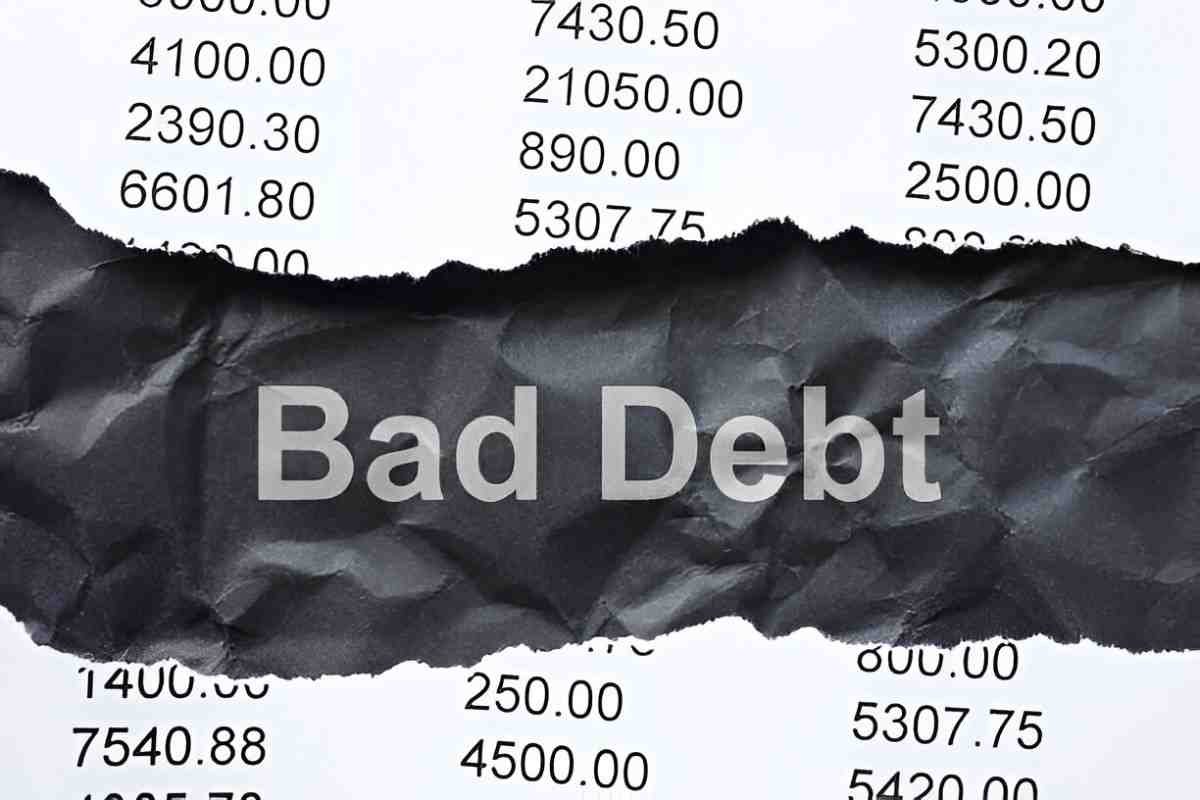As someone deeply immersed in the world of finance and accounting, I’ve come to appreciate the nuances of managing financial risks, especially when it comes to bad debts. The provision for bad debts is a critical concept that every financial learner must master. It’s not just about accounting compliance; it’s about understanding the financial health of a business and making informed decisions. In this article, I’ll guide you through the intricacies of bad debt provisions, offering key insights, practical examples, and actionable strategies to help you navigate this complex topic.
Table of Contents
What Is Provision for Bad Debts?
Provision for bad debts, also known as allowance for doubtful accounts, is an accounting practice where businesses set aside a portion of their accounts receivable to account for potential losses due to non-payment by customers. This provision acts as a buffer, ensuring that the financial statements reflect a more accurate picture of the company’s financial position.
In simpler terms, it’s like preparing for a rainy day. You know some customers might not pay, so you account for that possibility upfront. This practice aligns with the matching principle in accounting, which states that expenses should be recognized in the same period as the revenues they help generate.
Why Is Provision for Bad Debts Important?
Bad debts can significantly impact a company’s profitability and cash flow. Without a proper provision, businesses risk overstating their assets and net income, leading to misleading financial statements. This can have serious consequences, such as:
- Investor Misconfidence: Overstated profits can mislead investors, leading to poor investment decisions.
- Regulatory Non-Compliance: Failure to account for bad debts can result in penalties from regulatory bodies like the SEC.
- Operational Challenges: Unexpected bad debts can strain cash flow, making it difficult to meet operational expenses.
By mastering the provision for bad debts, you can mitigate these risks and ensure your financial statements are both accurate and reliable.
How to Calculate Provision for Bad Debts
Calculating the provision for bad debts involves estimating the amount of receivables that may not be collected. There are two primary methods for this:
- Percentage of Sales Method
- Aging of Accounts Receivable Method
Let’s explore each method in detail.
1. Percentage of Sales Method
This method calculates the provision based on a percentage of total credit sales. The percentage is typically derived from historical data or industry benchmarks.
The formula is:
\text{Provision for Bad Debts} = \text{Total Credit Sales} \times \text{Estimated Percentage of Bad Debts}For example, if a company has $1,000,000 in credit sales and estimates that 2% of these sales will be uncollectible, the provision for bad debts would be:
This method is straightforward but may not account for changes in customer payment behavior.
2. Aging of Accounts Receivable Method
This method is more detailed and involves categorizing accounts receivable based on their age and applying different percentages to each category. Older receivables are more likely to be uncollectible, so higher percentages are applied to them.
Here’s an example:
| Age of Receivables | Amount ($) | Estimated Uncollectible (%) | Provision ($) |
|---|---|---|---|
| 0-30 days | 500,000 | 1% | 5,000 |
| 31-60 days | 300,000 | 3% | 9,000 |
| 61-90 days | 150,000 | 5% | 7,500 |
| Over 90 days | 50,000 | 10% | 5,000 |
| Total | 1,000,000 | 26,500 |
In this case, the total provision for bad debts would be $26,500.
This method provides a more accurate estimate but requires detailed record-keeping and analysis.
Journal Entries for Provision for Bad Debts
Once the provision is calculated, it must be recorded in the financial statements. Here’s how the journal entries work:
- Recording the Provision:
Debit: Bad Debt Expense
Credit: Allowance for Doubtful Accounts For example, if the provision is $20,000:
Writing Off a Bad Debt:
When a specific account is deemed uncollectible, it is written off against the allowance:
Debit: Allowance for Doubtful Accounts
Credit: Accounts Receivable
For example, if a $5,000 debt is written off:
\text{Allowance for Doubtful Accounts} \quad \$5,000 \quad \text{Accounts Receivable} \quad \$5,000These entries ensure that the financial statements accurately reflect the company’s financial position.
Impact on Financial Statements
The provision for bad debts affects both the income statement and the balance sheet.
- Income Statement: The bad debt expense reduces net income.
- Balance Sheet: The allowance for doubtful accounts reduces the net accounts receivable.
For example, if a company has $1,000,000 in accounts receivable and a $20,000 allowance for doubtful accounts, the net accounts receivable would be $980,000.
Tax Implications
In the U.S., the IRS allows businesses to deduct bad debts from their taxable income, but only if the debt is specifically identified as uncollectible. General provisions for bad debts are not deductible. This distinction is crucial for tax planning and compliance.
Challenges in Estimating Bad Debts
Estimating bad debts is not an exact science. It requires judgment and often involves the following challenges:
- Economic Conditions: During a recession, bad debts may increase, requiring higher provisions.
- Customer Behavior: Changes in customer payment patterns can impact the accuracy of estimates.
- Industry Trends: Different industries have varying levels of credit risk.
To address these challenges, businesses must regularly review and adjust their bad debt provisions.
Best Practices for Managing Bad Debts
Based on my experience, here are some best practices for managing bad debts:
- Regularly Review Accounts Receivable: Monitor aging reports to identify potential risks early.
- Use Historical Data: Analyze past trends to improve the accuracy of estimates.
- Implement Credit Policies: Establish clear credit terms and conduct credit checks on new customers.
- Communicate with Customers: Maintain open lines of communication to resolve payment issues promptly.
- Leverage Technology: Use accounting software to automate and streamline the process.
Real-World Example
Let’s consider a real-world example to illustrate these concepts. Suppose Company XYZ has the following data:
- Total credit sales: $2,000,000
- Historical bad debt rate: 2%
- Accounts receivable aging report:
| Age of Receivables | Amount ($) | Estimated Uncollectible (%) | Provision ($) |
|---|---|---|---|
| 0-30 days | 800,000 | 1% | 8,000 |
| 31-60 days | 600,000 | 3% | 18,000 |
| 61-90 days | 400,000 | 5% | 20,000 |
| Over 90 days | 200,000 | 10% | 20,000 |
| Total | 2,000,000 | 66,000 |
Using the percentage of sales method:
\text{Provision for Bad Debts} = \$2,000,000 \times 0.02 = \$40,000Using the aging method, the provision is $66,000. The company decides to use the aging method for greater accuracy.
The journal entry would be:
\text{Bad Debt Expense} \quad \$66,000 \quad \text{Allowance for Doubtful Accounts} \quad \$66,000This example highlights the importance of choosing the right method based on the company’s specific circumstances.
Conclusion
Mastering the provision for bad debts is essential for anyone involved in finance and accounting. It’s not just about compliance; it’s about making informed decisions that reflect the true financial health of a business. By understanding the methods, challenges, and best practices, you can ensure your financial statements are accurate and reliable.





